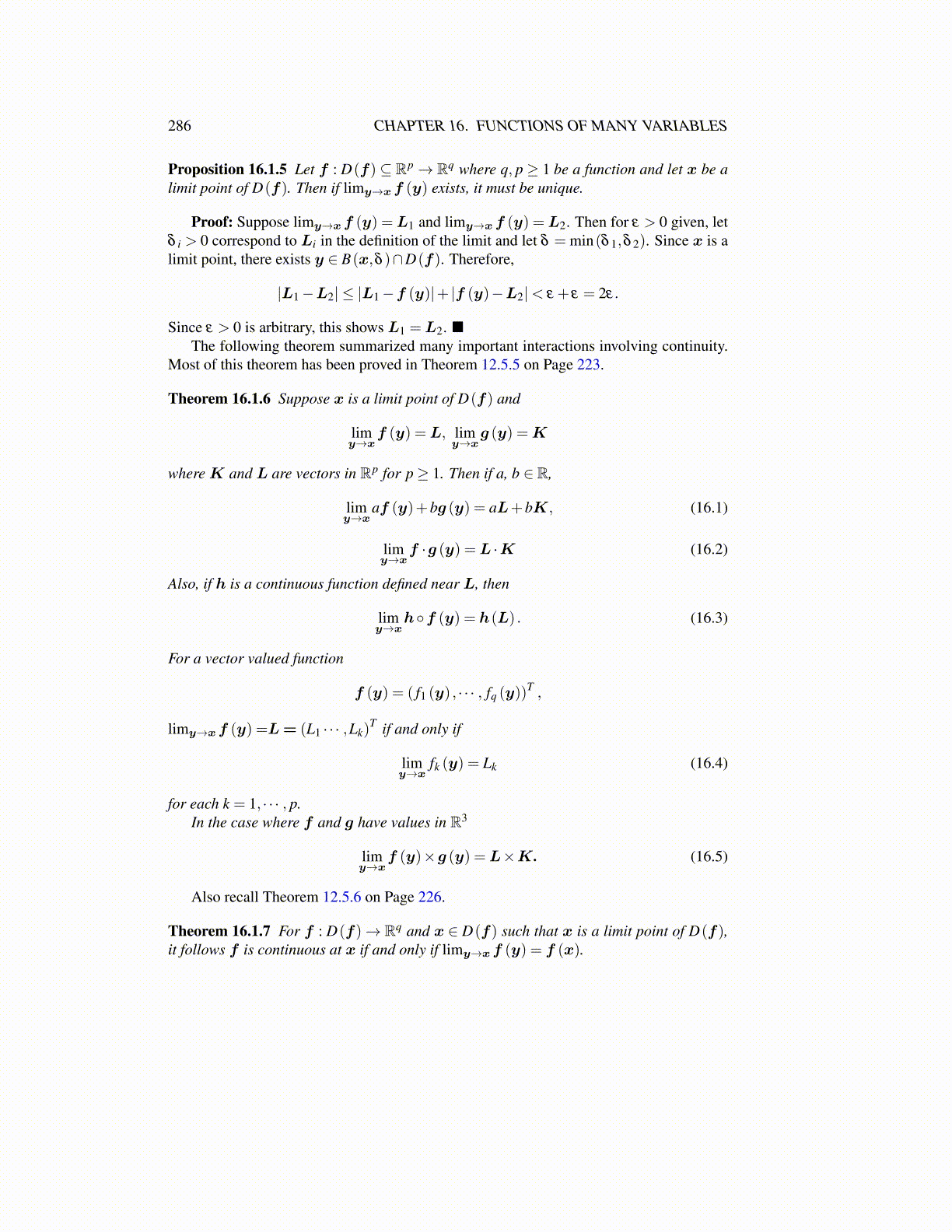
286 CHAPTER 16. FUNCTIONS OF MANY VARIABLES
Proposition 16.1.5 Let f : D(f) ⊆ Rp→ Rq where q, p ≥ 1 be a function and let x be alimit point of D(f). Then if limy→xf (y) exists, it must be unique.
Proof: Suppose limy→xf (y) =L1 and limy→xf (y) =L2. Then for ε > 0 given, letδ i > 0 correspond to Li in the definition of the limit and let δ = min(δ 1,δ 2). Since x is alimit point, there exists y ∈ B(x,δ )∩D(f). Therefore,
|L1−L2| ≤ |L1−f (y)|+ |f (y)−L2|< ε + ε = 2ε.
Since ε > 0 is arbitrary, this shows L1 =L2. ■The following theorem summarized many important interactions involving continuity.
Most of this theorem has been proved in Theorem 12.5.5 on Page 223.
Theorem 16.1.6 Suppose x is a limit point of D(f) and
limy→x
f (y) =L, limy→x
g (y) =K
where K and L are vectors in Rp for p≥ 1. Then if a, b ∈ R,
limy→x
af (y)+bg (y) = aL+bK, (16.1)
limy→x
f ·g (y) =L ·K (16.2)
Also, if h is a continuous function defined near L, then
limy→x
h◦f (y) = h(L) . (16.3)
For a vector valued function
f (y) = ( f1 (y) , · · · , fq (y))T ,
limy→xf (y) =L= (L1 · · · ,Lk)T if and only if
limy→x
fk (y) = Lk (16.4)
for each k = 1, · · · , p.In the case where f and g have values in R3
limy→x
f (y)×g (y) =L×K. (16.5)
Also recall Theorem 12.5.6 on Page 226.
Theorem 16.1.7 For f : D(f)→ Rq and x ∈ D(f) such that x is a limit point of D(f),it follows f is continuous at x if and only if limy→xf (y) = f (x).